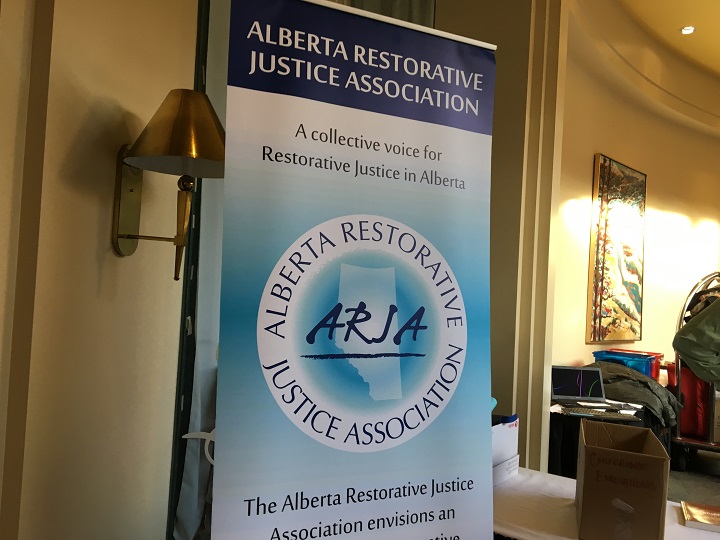During her years as a principal in Edmonton public schools, Caroline Gosling was frustrated by the results of students being suspended for bad behavior.

“In my experience, suspensions don’t really teach anything. At best they are a three day holiday and at worst, we are sometimes sending kids back to a situation that is unsafe, Gosling said.
“They don’t learn anything and nothing changes when they come back.”
Gosling is now a restorative justice practitioner. She was in Calgary on Saturday speaking at the 11th annual Restorative Justice Conference organized by the Alberta Restorative Justice Association.
Gosling was advising teachers how they can use restorative justice to curb negative behaviors in schools.
In Alberta, some schools are now using a formal circle process instead of suspension or expulsion. Other schools use them as a re-integration process.
“The idea of holding a conference where they can be directly accountable to the people that they harmed, they learn something. They learn how their actions impact others. It affects them on a heart level, and not just on a head level,” Gosling said.
Two types of restorative practices were discussed at Saturday’s workshops that focused on schools.
One is the justice component where the person who has done the harm sits down with all the people who were affected by his or her actions. That person would then come up with a way to repair the situation.
The other component is known as “peace keeping circles”. It’s designed to prevent problems before they arise.
“It’s an awesome opportunity for the kids to get to know each other in a different way,” attendance Tammy Plamondon said.
Plamondon is a social worker from Fort Saskatchewan who works with elementary school-aged students.
They routinely sit in a circle and listen to each other’s stories to help solve minor problems.
The practice gives each child a voice which creates trusting relationships and fosters empathy, she said.
“It’s about feeling closer to everyone in the classroom because one of the principles of restorative practice is that you are building empathy and compassion for other people. Because when you
get to know somebody’s story then you can’t act towards them in a negative manner,” Plamondon said.
Plamondon spoke about a recent circle she was a part of in Fort Saskatchewan where there was a conflict going on between three boys.
The boys, along with their parents, teachers, and the principal all sat in a circle and talked about the problem and how everyone was affected.
“Everybody learned more about the perspective of the other person that they didn’t realize before and the impact. They thought it was just between me and him but really there were three people involved and beyond that the parents were affected and so was the whole school,” Plamondon said.
There are no statistics that show how many Alberta schools have implemented restorative practices. Their use is at the discretion of school administration.
Proponents of the practice said awareness is needed within school districts of the benefits of the principles of restorative practices.
“It works,” Gosling said.
“I’ve always worked in schools where suspending children wasn’t an option because it wasn’t safe. And so this was the go-to option for resolving conflict and I saw huge changes in kid’s behavior.
However, Gosling notes there are criteria for holding a circle and the first one is that the person who caused the harm has to take responsibility.
“It’s not going to work in all cases because if you have a student who is refusing to take responsibility for something, then it’s not an option for them.
She said they are working on teaching kids the skill of taking responsibility.



Comments